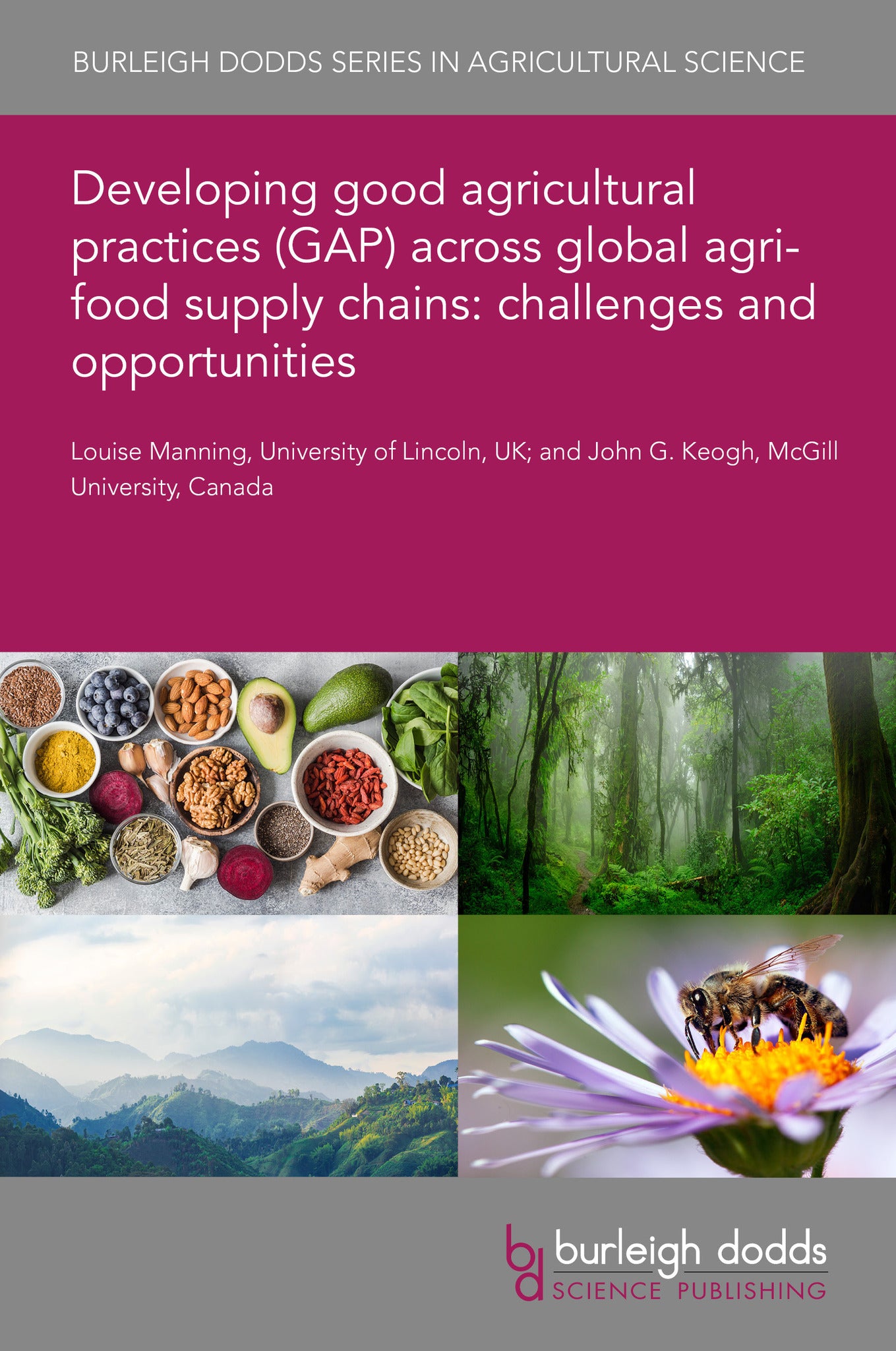We're sorry. An error has occurred
Please cancel or retry.
Developing good agricultural practices (GAP) across global agri-food supply chains: challenges and opportunities

Some error occured while loading the Quick View. Please close the Quick View and try reloading the page.
Couldn't load pickup availability
- Format:
-
18 November 2024

Good agricultural practices (GAP) define the practices at the farm level that can be adopted to assure safe and healthy food is produced profitably with appropriate standards in terms of animal welfare, worker welfare and environmental protection. This chapter describes GAP, notions of good farming, how GAP standards have evolved in developed and developing economies, the opportunities to evolve these pre- and post-harvest standards, and their related principles and practices in the future.

TECHNOLOGY & ENGINEERING / Food Science / Food Safety & Security, Sustainable agriculture, TECHNOLOGY & ENGINEERING / Agriculture / Sustainable Agriculture, TECHNOLOGY & ENGINEERING / Agriculture / Agronomy / Crop Science, TECHNOLOGY & ENGINEERING / Agriculture / Animal Husbandry, Food security and supply, Agriculture, agribusiness and food production industries, Agronomy and crop production, Animal husbandry

- 1 Introduction
- 2 The evolution of GAP as a concept
- 3 The development of GAP standards
- 4 Challenges facing GAP standards and implementation
- 5 Ensuring the effectiveness and inclusivity of GAP: the case of VietGAP
- 6 Conclusion
- 7 Acknowledgements
- 8 References



